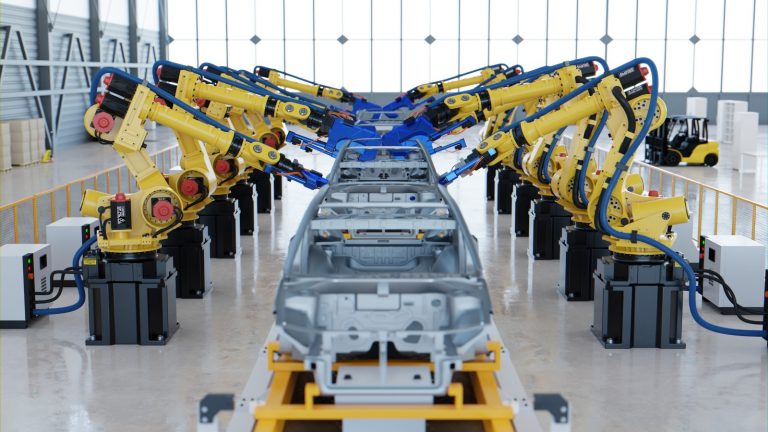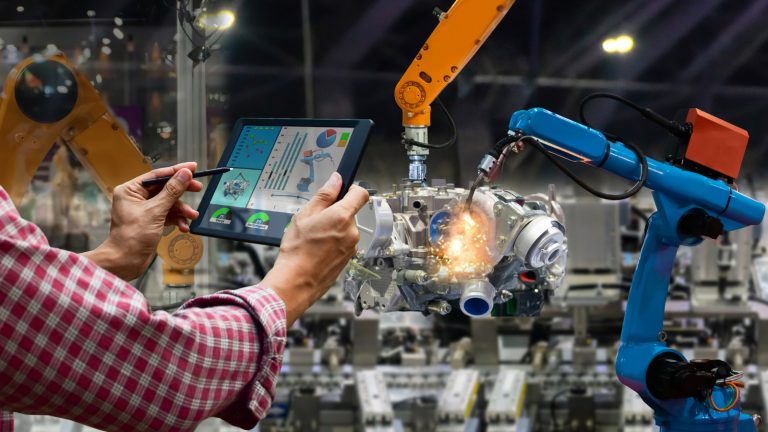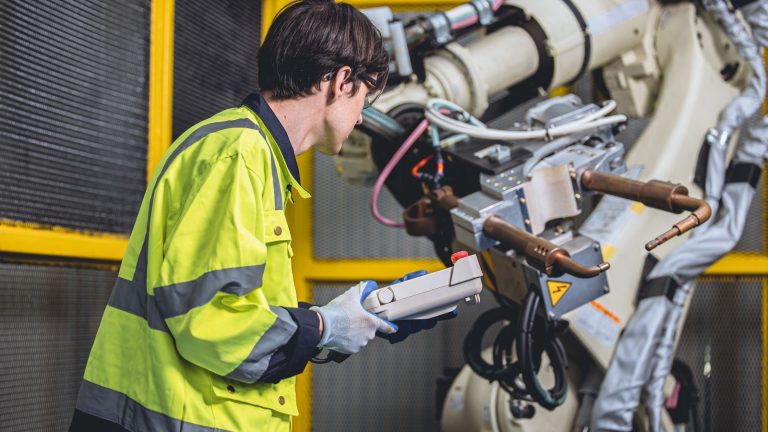Robotic technology has been in the spotlight for over a decade now, and more and more companies in Singapore have started making this brave movement forward with robots. Manufacturing is one industry that is full of various complex tasks and requires a heavy workforce and planning to fulfil those duties successfully. This is why the manufacturing sector in Singapore needs help from robotic technology, and due to this same reason, diverse types of robots are invented in order to be employed inside their factories.
In today’s article, we will look into the implementation of robots in the manufacturing industry in Singapore and the best robots that every manufacturer should consider for 2024.
Why Does the Manufacturing Industry Require Robots?

Before digging deeper into this topic, let us explain the importance of robotic technology in the manufacturing environment. This industry relies on robots for several reasons that are crucial to its operations. As you can see, robots increase productivity by accurately and quickly completing repetitive activities, lowering human error, and improving output reliability. They also do well in physically demanding or dangerous settings where human interaction might be tough.
Another thing is that robots contribute to efficiency by operating around the clock. It also helps with minimising downtime and speeding up production cycles. They are more like concentrated machines. Their expertise in managing difficult activities, complex operations, and elaborate assembly procedures is the way to enhance the production process.
On one hand, this robust employment of modern technology enhances productivity. On the other hand, it is known to help with the cost-efficiency of a particular factory or plant. How is this possible? Imagine how many employees you will need to fulfil the duties within a factory and the expense of all the labour work. You can definitely reduce this cost by implementing one robot to replace 10–15 workers inside your factory.
Implementing robotic machines within the business, no matter what industry you belong to, will benefit greatly and offer a competitive advantage in the dynamic Singaporean market for sure in 2024.
The Top 6 Most Demanding Robots for the Manufacturing Industry for 2024

Articulated Robots
These adaptable robots are made of metal and have joints that match the range and flexibility of human limbs. They are made up of several sections joined by rotating joints, allowing for multi-axis motion. They usually include a set of joined arms that resemble wrists and elbows.
The beauty of them is that they are made with a high degree of freedom, allowing them to function in complex motions across various planes and angles, which encourages precise and complicated operations.
They are often utilised in the industrial business world, especially in assembly lines and jobs requiring sensitivity. Their versatility makes them perfect for jobs requiring complex motions, such as material handling, welding, painting, and complex assembly procedures.
As a result of their flexibility and range of motion, articulated robots are widely used in a variety of sectors for tasks demanding accuracy and quickness.
SCARA Robots
‘Selective Compliance Assembly Robot Arms’, or short SCARA robots, are specialised machines that are specifically employed in manufacturing for precise and repetitive tasks.
These robots can move steadily and accurately in the horizontal direction since they have several joints arranged in an articulated arm, vertical arm, or horizontal arm arrangement. Compared to other robotic arms, SCARA robots are designed to move swiftly and accurately inside a particular workspace. They are especially good for picking and placing objects, assembling, packing, and handling materials.
They are incredibly efficient and repeatable due to their design; they allow quick and steady motions along a fixed path. SCARA robots are widely employed in manufacturing processes where speed, precision, and dependability are essential, such as electronics assembly, automobile production lines, and pharmaceutical packaging. As you can see, these sectors require rapid, accurate, and repeated operations. When the latter is employed, the manufacturers will be able to make sure the required flexibility is there.
Delta Robots
Delta robots, also known as parallel robots, are specialised machines extensively used in manufacturing for high-speed, complex tasks. You can clearly identify this type of robot as it is built with a unique design. These robots include a symmetrical mechanical framework made up of three limbs that are attached to a base.
They can move quickly and efficiently inside an allocated work area due to their unique layout.
Delta robots perform outstandingly in tasks that need quick pick-and-place, packing, sorting, and assembly work, particularly in the electronics, pharmaceutical, and food and beverage manufacturing sectors.
Nowadays, these robots have become popular for operations that require rapid processing, strict cycle times, and accurate positioning due to their exceptional speed, agility, and quick handling of lightweight items. This has led to a significant increase in manufacturing productivity and efficiency across a range of industries.
Cartesian Robots
They are also known as gantry or linear robots, which are becoming highly popular in the manufacturing industry for their straightforward yet effective design. The uniqueness of them lies in their ability to operate on three linear axes (X, Y, and Z), moving along fixed, orthogonal paths within an allocated workspace.
Their framework, which is shaped like a grid, allows for accurate and dependable motions in straight lines. When it comes to tasks like material handling, assembly, and machining, where repetitive, linear motions are needed, Cartesian robots are quite effective.
The number one reason the latter is seeing a huge demand for numerous manufacturing sectors, including automotive, electronics, and packaging, is because of their ability to accurately place tools or components.
Mobile Robots
This refers to autonomous or semi-autonomous machines that are equipped with mobility capabilities that allow them to navigate and operate within a factory or warehouse environment without any fixed infrastructure or guidance.
These robots can be tracked or wheeled, and sometimes they have cameras, sensors, or mapping technologies for preventing obstacles and navigation. Mobile robots are adaptable and are capable of carrying out a variety of tasks at a manufacturing plant, including inventory control, material delivery, and inspection at different points.
If we look into the reason for their popularity, it lies in their ability to adapt to changing environments, navigate dynamic spaces, and collaborate with human workers or other machines, for sure. These qualities make them valuable in optimising logistics, expediting workflows, and enhancing overall operational efficiency inside a smart manufacturing setup.
Systems Integration Robots
They are specialised robotic systems made to work in synergy and collaboration with various machines and systems in a manufacturing environment.
As they serve as connectors, these robots make it possible for different kinds of machinery, events, and procedures to communicate with one another. They make it easier for different parts, such as robotic arms, sensors, conveyors, or production gear, to communicate and collaborate to create a synchronised and unified manufacturing environment in today’s world.
These systems integration robots play the main role in handling and optimising workflows, ensuring efficient coordination between different systems, and adhering to their sole purpose.
They simplify processes, increase efficiency, and open the door for smart, networked manufacturing systems that can react to changing market conditions and advancements in technology by encouraging compatibility and connection.
Cerexio AGV Technology

Cerexio ‘AGV’ technology is cutting-edge, autonomous vehicles using advanced navigation technologies like cameras, lasers, and magnets. Offering tailored solutions for high-density warehouses, they flawlessly integrate into AGV fleets, adapting routes and schedules to meet specific needs, which ensures optimal resource and inventory mobility for diverse manufacturing environments.
Expedite Operations with Robotic Technology

If you are dreaming of a smart manufacturing facility, then it is high time to consider smart technology like manufacturing robots. As there are many options when it comes to robotics, you can select the best suit according to your industry requirements. Collaborating with an industry expert is the ideal way to make your smart dream come true.
